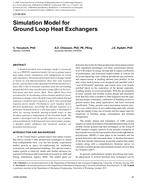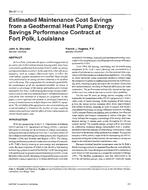Click here to purchase
This chapter describes air-conditioning and heating systemsfor buses, rail cars, and fixed-guideway vehicles that transport large numbersof people, often in crowded conditions. Air-conditioning systems for thesevehicles generally use commercial components, but are packaged specifically foreach application, often integral with the styling. Weight, envelope, powerconsumption, maintainability, and reliability are important factors. Powersources may be electrical (ac or dc), engine crankshaft, compressed air, orhydraulic. These sources are often limited, variable, and interruptible. Characteristicsspecific to each application are discussed in the following sections. Designaspects common to all mass-transit HVAC systems include passenger comfort(ventilation, thermal comfort, air quality, expectation) and thermal load analysis(passenger dynamic metabolic rate, solar loading, infiltration, multipleclimates, vehicle velocity, and, in urban applications, rapid interior loadchange).Ventilation and Thermal ComfortThermal Load AnalysisBus Air ConditioningRail Car Air ConditioningFixed-Guideway Vehicle Air ConditioningNo. of Pages: 9
Citation: 2019 ASHRAE Handbook¿¿¿HVAC Applications
Product Details
- Published:
- 2019
- Number of Pages:
- 9
- Units of Measure:
- Dual
- File Size:
- 1 file , 4 MB
- Product Code(s):
- D-A122019SI


